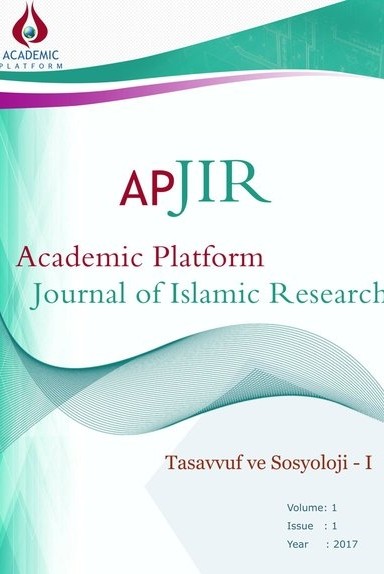
Akademik Platform İslami Araştırmalar Dergisi
Yazarlar: Mohammed Hüseyin AL-SAMANEH
Konular:-
Anahtar Kelimeler:Jerusalem In Emile Habibi’s Noval,Sextet Of The Days,Nakba and Naksa
Özet: This research seeks to shed light on the image of Jerusalem and its people in Emile Habibi’s novel Sextet of the Six Days. It also presents the impact of 1948 and 1967 on the Palestinian exodus known as Nakba and Naksa, on Jerusalem’s population, its quarters and stones. The novelist narrates the shapeless return of a nation united under Occupation tanks and spears. The novel handles the humanitarian and social rupture of the Palestinians in general and the people of Jerusalem in the wake of defeat. It, furthermore, depicts the gathering of the Palestinian Diaspora in Palestine after the June War. The researcher aims to explain how the population of Jerusalem, Muslims, and Christians resisted the Occupation. It was their love, harmony and brotherhood that united them, along with the collaboration of Palestinians under the umbrella of both the Cross and Crescent. In the novel, the researcher has presented the close relationship between Jerusalem, the place, and the population who deceived strange policemen when they went through Alsadiya Quarter to Alzahira Gate until they entered the graveyard and covered the tombs with flowers. The researcher saw that Emile Habibi has chosen a number of characters that represented the Palestinian sects, classes and successive Palestinian generations, some of whom lived in the British occupation era, another in the Nakba era (the 1948 war) and the other lived in both eras, the Nakba and Naksa. Thus, through these characters, Emile Habibi is trying to present his vision of how the deal with the Occupation. Besides, the researchers found that the women of Jerusalem are strongly present in the novel. They can be viewed as courageous, patient and tough. They also have a great influence on rallying and preparing fighters. Women can do many things for the sake of their homeland: they wash the prisoners’ clothes, they serve their husband, and they also hard stones at the enemies. The novel Sextet of the Six Days is remarkably teeming with the places of Jerusalem.